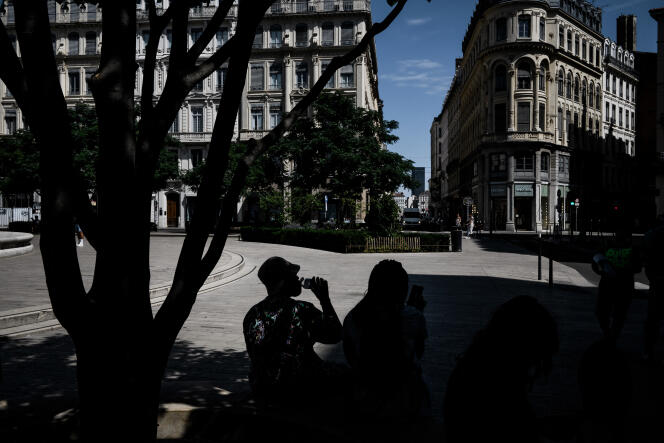


With August drawing to a close, a large portion of the French population should have been preparing for the start of the new school year. But an intense heat wave is set to blanket much of the country. Twenty-eight départements have been placed on "vigilance orange canicule" by Météo-France as of Saturday, August 19. They are mainly located along a diagonal running from the Gers in the south-west to Haut-Rhin in the east, and extending to Savoie and Drôme. High temperatures, "sustained and intense" according to the weather institute, could approach or even exceed 40°C over the next few days, especially in the south-east and the Rhône valley, with the heat gradually rising towards the north.
Although the nights could remain very hot in many places, such as Lyon and throughout the southern Mediterranean, Météo-France is forecasting a drop from Tuesday or Wednesday, even if "there is still a lot of uncertainty about the middle of the week," acknowledged Christelle Robert, forecaster at Météo-France, on Thursday. "This new episode is shaping up to be the hottest in the summer of 2023," warned the weather institute in a statement published on Thursday. "It could also be one of the last heat waves France has experienced with such a high level of intensity at the end of the summer season."
To monitor developments, the Prime Minister's office convened an interministerial crisis unit late on Thursday for the first time. On Friday morning, the Canicule Info Service national information platform was set up, and the country's two main leaders sent out messages of caution. "Let's look out for each other," wrote French President Emmanuel Macron on his social networks, while his Prime Minister Elisabeth Borne urged the French to be mindful of "vulnerable people."
A number of sectors are already trying to anticipate the consequences of this heat wave. EDF (Electricité de France, a multinational electric utility company owned by the French state) is considering reducing production at its Bugey (eastern France) and Tricastin (south of France) nuclear power plants to avoid excessive warming of the Rhône waters that cool their reactors. The Ligue 1 football matches, Olympique Lyonnais-Montpellier Hérault SC and AS Monaco-RC Strasbourg, scheduled for Saturday and Sunday at 5:00 pm, have been postponed to 7:00 pm.
These measures are designed to guard against a rise in temperatures caused by a heat dome. This atmospheric phenomenon will gradually settle over France, Switzerland, and parts of Spain and Germany. It is associated with high pressure aloft, which concentrates the warm air. Trapped close to the ground, this air heats up day by day as it compresses. Two other heat domes, linked to the one positioned over Europe by a particularly sinuous and intense jet stream at altitude, are currently intensifying over Greenland and the United States, also causing abnormally high temperatures. "In Europe, we have southwesterly winds feeding the dome. In terms of processes, we have a somewhat hybrid event, with this dome and the transfer of heat from the south," analyzed climatologist Christophe Cassou from the CNRS (Centre National de la Recherche Scientifique, the French state research organization).
You have 48.91% of this article left to read. The rest is for subscribers only.
